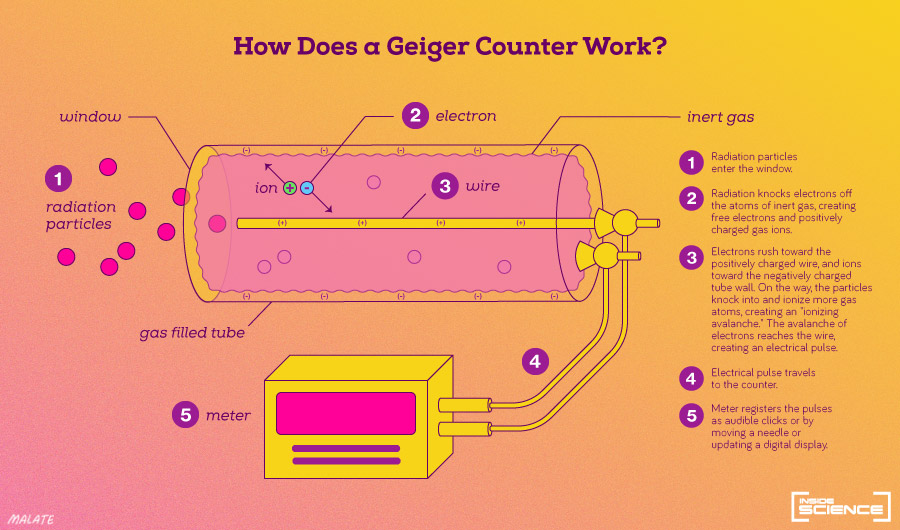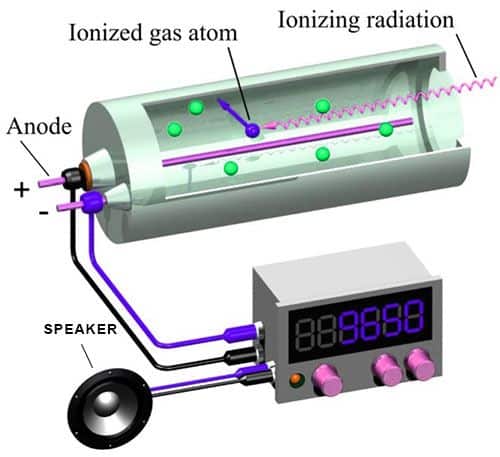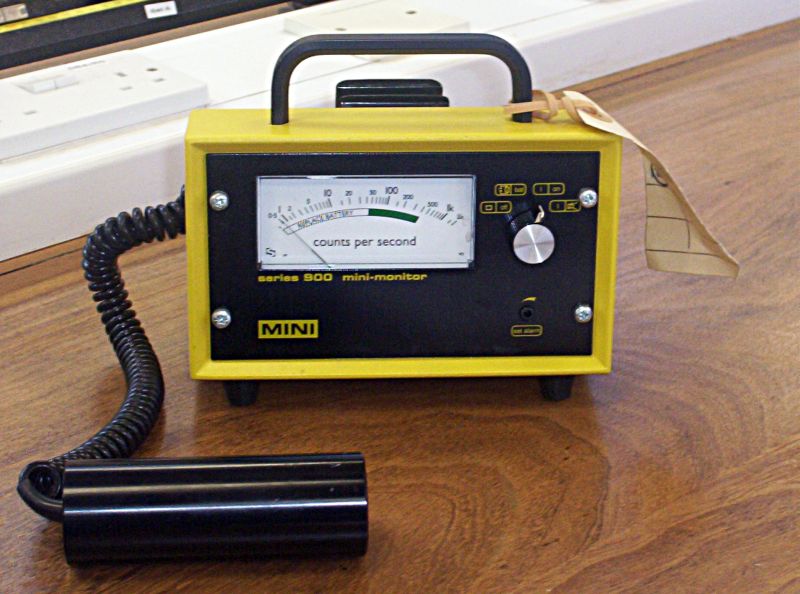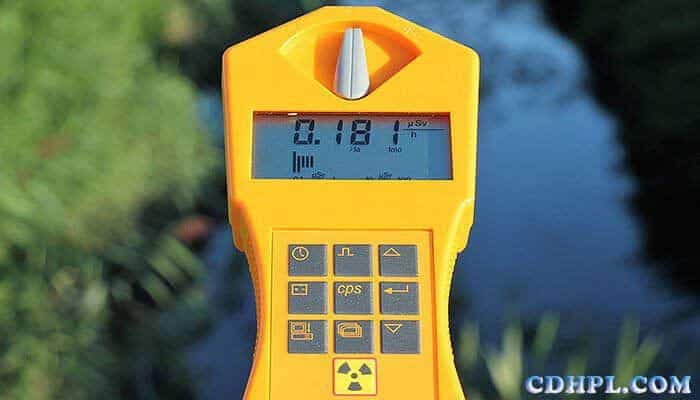You can read in this article how does Geiger counter works. The Geiger counter is a radiation detector that is linked with the weapons. Not only this, but the counter is also used to detect nuclear waste and nuclear exposure in powerhouses and hospitals. Moreover, the by-products in nuclear plants are also recognized by the Geiger counter. These detectors can detect harmful radioactive materials around the people. The sensor uses the degradation of unstable radioactive atoms to detect the harmful radiations present in the surroundings.

Source:insidescience.org
The prominent part of the Geiger counter is its detector. The function of the detector is to figure out and detect the radioactive particles present in the surroundings. To fully understand the procedure of how the sensor detects the radioactive particles, it is essential to know what radioactive ionizing radiation is. It is necessary to understand why it is essential to identify the emissions and how they make a click, click, click sound.
The essential part of the matter in the universe is considered to be the atoms. Every element present in the world is comprised of atoms. These elements have various subatomic particles. The simplest element present in the universe is hydrogen with only one electron (negatively charged) and hence only one proton (negatively charged) and no neutron. Hydrogen has no neutron, which makes it a highly stable element available. Being highly reactive, hydrogen is used in a large number of applications. You might like another article about The 8 Best Geiger Counter For Personal Use.
On the other hand, the most massive element in the universe is Uranium with 92 electrons and the same number of protons and 146 neutrons. A very high number of neutrons make it highly unstable element. However, upon reaction with other factors, Uranium breaks down into smaller components. These elements are the stable ones. When Uranium breaks down upon reaction, it gives small particles and releases a high amount of energy.
How does Geiger counter Works Diagram?

The particles which come as by-products can remove the electrons of other atoms present in their surroundings. This process is known as ionizing radiation. We are discussing ionizing radiation here because it is essential in understanding the working of the Geiger counter detector.
When radiations come from an element, they can be into three forms i.e., alpha, beta, and gamma.
Alpha particles are the slowest ones. They can travel a very short distance as they do not have enough power. Beta particles can travel long miles than alpha particles. Gamma is radiation that can go long distances. Gamma radiations can penetrate in substantial matters. Gamma radiations are considered as the most dangerous form of pollution because it tends to penetrate the materials which may cause damage to the atoms.
This is why the Geiger counter was designed to detect the gamma radiations and beta particles. Both of the emissions can cause damage to a massive extent. The detectors of the Geiger counter are filled with inert gas and have a fixed electrode in the middle of the chamber. The wire is provided with a positive charge via battery.

Source:wikipedia
The released energy and atoms as a result of the breakage of molecules hit a large number of electrons of various atoms found nearby. As an individual, these electrons may have a minimal charge, but collectively they cause short electrical pulse. The positively charged electrode or wire may attract the negatively charged particles.
Whenever radioactive atoms break downs, and it shoots the nearby electrons of various atoms, a short electric pulse produces. This pulse creates a click, click sound on the detector. Every “click” is the indication that a single atom has decayed. During normal situations, the rate of clicking is 50 times per minute, but when it is about the nuclear bomb, the rate elevated to 50 times for each second.
Other body parts of the counter help to indicate the radiation level and encompass a speaker to detect the number of clicks.

